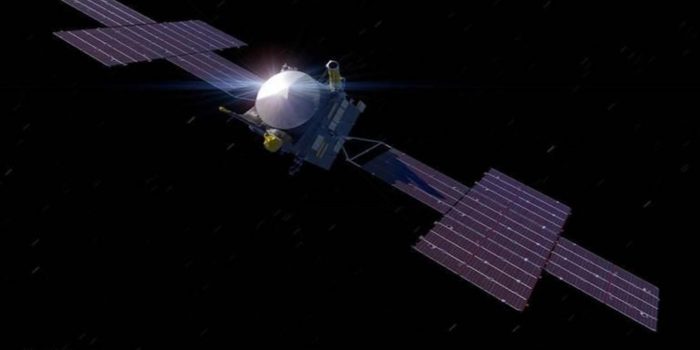NASA has developed a spacecraft that will target the asteroid, 16 Psyche. The spacecraft is named after this large asteroid and has been dubbed Psyche. The asteroid is present between the belt of Mars and Jupiter. Scientists know it’s shaped like a potato, and the light that reflects off its surface suggests the asteroid is “unusually rich in metal,” according to a recent press release from NASA’s Jet Propulsion Laboratory.
The asteroid is expected to be from the earlier days of the solar system. The team is looking forward to collecting information about its density, mass, and spin. The collected data can lead to asteroid mining.

The probe is expected to launch from NASA’s Kennedy Space Center in August 2022. It is supposed to complete the first step of its 1.5-billion-mile (2.4-billion-km) journey that will take it near Mars. Nine months after launch, Psyche will use the Red Planet’s gravity to slingshot toward the asteroid. Then it will take images of the object. The spacecraft is roughly the size of a tennis court.
The craft will be around 435 miles (700 km) above the asteroid, and it will collect information to “precisely determine the asteroid’s mass, gravity field, rotation, orientation, and wobble,” according to NASA’s release.
Once this phase is done, Psyche will use its electric propulsion system to navigate into increasingly tight orbits around the asteroid. It will spend 80 days studying its topography and then 100 days studying its gravity. Lastly, to gauge the elemental composition of the asteroid, the craft will fly just 53 miles (85 km) above its surface. Psyche will have a neuron and gamma-ray spectrometer, a magnetometer, and a multispectral imager.
The asteroid has been under the radar since 1852 when Italian astronomer Annibale de Gasparis spotted it. Modern astronomers are interested in 16 Psyche because it appears to be made mostly of iron and nickel, two elements that were abundant in the early Solar System.
“If it turns out to be part of a metal core, it would be part of the very first generation of early cores in our solar system,” Arizona State University planetary scientist and mission leader Lindy Elkins-Tanton said in the press release.
Figures including astrophysicist Neil deGrasse Tyson and executives at investment bank Goldman Sachs believe that asteroids can be a potential source of mineral resources. The 16 Psyche could contain metals worth up to $700 quintillion in value.


